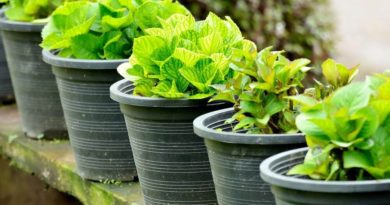Hydroponic Systems – Good habits

Good habits in hydroponics are as easy to form as bad ones, one of the most annoying tasks is general maintenance of nutrient tanks and hydroponic systems.
Most of these tasks are relatively easy once you have the right information and by working more efficiently from the beginning of your projects you will find you have more time for your plants, and less time spent cleaning and correcting problems.
Perform these Good habits on a daily basis:
- Check the pH of your hydroponic solution.
- Adjust the pH up or down as required.
- Check the temperature of your hydroponic system.
- Check the concentration of food in water we use an EC meter.
- Nutrient levels (EC) should also be checked daily.
Filling up and adjusting your Hydroponic system or nutrient tank
Certain plants grown in DWC systems (deep water culture) have preferred pH and EC levels, it is up to the grower to adjust the nutrient solution according to the plants requirements, don’t just follow a feeding chart and assume it has been designed for the type of plant you’re growing, they generally state that they are intended as a guide only, so we must establish and understand the ideal nutritional requirements per crop before preparing large volumes of hydroponic nutrients and water.
Try to understand the daily needs of each plant thats being fed from a tank, this will help you figure out how long the solution will feed your crops for.
Always check the reservoir level, monitor how long this nutrient tank will last using a journal or garden diary and always be prepared to fill and clean if necessary.
Here is few examples of pH and EC values per crop:
- Tomato: pH 5.8-6.7 – EC 1.8-3.5
- Chilli: pH 5.2-6.5 – EC 1.2-2.1
- Lettuce: pH 5.8-6.5 – EC 0.8-1.2
- Cannabis: pH 5.5-6.5 – EC 0.8-2.4
Check your water Temperature
A very important measurement quite often overlooked is water temperature, the sweet spot; 18.5-22C below this and root zone activity is slowed, nutrient absorption is restricted and the roots ability to absorb oxygen is limited.
Above 22C affects the nutrient solution stability, root zone oxygen is limited, and pathogens can now grow in solution which can cause problems like root-rot and nutrient lock out. Growers implement devices such as water chillers or water heaters especially those that encounter fluctuating grow room conditions caused by ambient weather.
Equipment quality, reservoir and/or Hydro System materials?
Doesn’t seem like a big deal, water tanks are the same right? Wrong, some containers are not suitable for growing food grade crops as they leach certain chemicals into the water that were used in the manufacturing process, these chemicals leach into water when exposed to an increase in temperature.
The safest plastics to use for any hydroponics DIY projects are HDPE plastics.
You’ll pay a bit more for them, but can rest assured that your sticky herbs and veggies are safe to consume.
Your local hydroponics equipment supplier should have a huge range of tanks and hydroponic systems all manufactured with this standard in mind, so if building a system isn’t quite your thing there are plenty of hydroponics shops in Melbourne that can help you choose the right one.
Light exposure, keep your solutions covered.
When a reservoir is not sealed from light, algae can grow in the hydroponic nutrient mix. Algae for the most part isn’t a big deal even though it is sucking nutrients from your tank however, there are some forms of algae that a super toxic and can harm you as well as your plants, to negate this most growers would have some type of lid or covering mounted over the tank to prevent any light from entering the solution.
To ensure this doesn’t become a major problem, when you clean you system and tanks each week use some hydrogen peroxide to remove any bacterial buildup and sterilise the system before adding a fresh nutrient mix for your plants.
These simple yet often overlooked good habits can be the difference between success and failure. Only cut corners once the foundations have been formed. What other good habits can you think of?
Comment if you’d like to keep the conversation going. 




